Living with the Curse of the Armenians
Nurcan Baysal was born in 1975 in Diyarbakır, Turkey. Between 1997 and 2007 she managed development projects related to poverty in Diyarbakır and the surrounding villages as part of the United National Development Program. She later joined the Hüsnü Özyeğin Foundation as program director to lead rural development projects between 2008 and 2013. Over the last two decades, she has collaborated with a number of civil society organizations that deal with issues such as forced migration, poverty, development, women’s rights, and the Kurdish question. She is one of the founders of the Diyarbakır Institute for Political and Social Research (DISA) and consults for international foundations such as the Global Fund for Women and the Women’s Labor and Employment Initiative Platform. She writes for various magazines and newspapers on the topics of poverty, development, and the problems of the Kurdish communities in Turkey. Though it began as a chronicle of the rural development projects she implemented in the Kavar basin in eastern Turkey, O Gün is the story of the region’s Kurds over the last three decades. She is also the author of Ezidiler: 73. Ferman (Yazidis: 73rd edict) and coauthor, with Şeyhmus Diken, of Kürdistan’da Sivil Toplum (Civil society in Kurdistan).
The Collective Memory of Ongoing Wars
by Nathalie Alyon
Nurcan Baysal’s personal essay “Living with the Curse of the Armenians” narrates the author’s journey in defining her identity as a Kurdish citizen of Turkey against the backdrop of the Armenian Genocide.[1] Her account, based on childhood memories as well as her experiences implementing rural development projects in Kurdish villages in eastern Turkey’s Kavar basin, touches upon two very sensitive issues: the Armenian Genocide and the “Kurdish question.”
Similar to her book O Gün (That day), in which the author gives voice to Kurdish villagers in eastern Turkey, this essay serves as an attempt to make peace with her family’s dark past with regard to their Armenian neighbors, so many of whom perished a hundred years ago. When I approached Baysal to share her personal account for this issue of JLS, she agreed to contribute despite a busy schedule that of late does not allow for extra projects. “But when the topic comes to Armenians everything changes,” she wrote. “I feel like whatever I do is not enough. Perhaps their pain has seeped through to us.”
Baysal’s description of her great-grandmother’s grief, embodied in the ballads she and other women of the region sang, reveals a universal expression of coping with past trauma and the shaping of collective memory. “As my Nene sang to me, her century-old existence found voice in her ballads, and I got to know her through music,” the author writes. The folkloric songs and ballads served these women not only as a tool for confronting the past but also as threads of communication as younger generations lost the language of their elders. In the concluding chapter of O Gün, Baysal recounts a conversation she had with her young son, Bawer, at the Newroz celebrations in Diyarbakır in 2013:
“Mom, if we are Kurds, then why don’t we speak Kurdish?”
“When I was a child, it was forbidden, son.”
“Why?”
“At that time, the state didn’t want us to learn our language.”
“Does the state fear language, Mom?”
“They feared, son.”[2]
For most of its 600-year existence, the Ottoman Empire thrived as a multiethnic, multireligious, multilingual empire that relied on inclusion rather than exclusion of peoples for its success.[3] It is as a testament to this diversity that Baysal insists on referring to her hometown using all its names: its historic name, Amida, which preceded the Romans; Amed, as it is known to its Kurdish residents; Dikranagerd, as Armenians call the ancient city; and Diyarbakır, its official Turkish name.
The first two decades of the twentieth century witnessed an immense shuffling of Anatolia’s diverse population. Millions of people were moved as a result of wars, forced population exchanges, and deportations. Following ten years of continuous warfare between 1912 and 1922, the population of Anatolia declined considerably: as a direct result of war and disease alone, millions of Muslims, Christians, and Armenians lost their lives.[4] When the Republic of Turkey was officially declared in 1923, Anatolia lay in ruins.
By the time Turkey conducted its first national census in 1927, the country was 98 percent Muslim; just a few years earlier, before the Great War, it had been only 80 percent Muslim. From the linguistic diversity that had once characterized the empire, only two major languages remained: Turkish and Kurdish.[5]
The people of Anatolia who lived to tell the tale carried this trauma as trees carry their fruit. Their ballads and songs endured over generations, helping to heal the survivors’ wounds, which lay open for so many years. Baysal’s account, presented in the following pages, is another tale, another song, that attempts to heal old wounds and mourn new ones, as ethnic conflict continues to beset the people of Anatolia.
Notes:
[1] The Republic of Turkey does not acknowledge the Armenian Genocide.
[2] Nurcan Baysal, O Gün [That day] (Istanbul: İletişim Yayınları, 2014), 299. All translations are mine.
[3] Donald Quataert, The Ottoman Empire, 1700-1922 (New York: Cambridge University Press, 2005), 2.
[4] Erik Zürcher, The Young Turk Legacy and Nation Building: From the Ottoman Empire to Atatürk’s Legacy (London: I.B. Tauris, 2010), 139.
[5] Ibid., 140.
- + About the Author
-
Nurcan Baysal was born in 1975 in Diyarbakır, Turkey. Between 1997 and 2007 she managed development projects related to poverty in Diyarbakır and the surrounding villages as part of the United National Development Program. She later joined the Hüsnü Özyeğin Foundation as program director to lead rural development projects between 2008 and 2013. Over the last two decades, she has collaborated with a number of civil society organizations that deal with issues such as forced migration, poverty, development, women’s rights, and the Kurdish question. She is one of the founders of the Diyarbakır Institute for Political and Social Research (DISA) and consults for international foundations such as the Global Fund for Women and the Women’s Labor and Employment Initiative Platform. She writes for various magazines and newspapers on the topics of poverty, development, and the problems of the Kurdish communities in Turkey. Though it began as a chronicle of the rural development projects she implemented in the Kavar basin in eastern Turkey, O Gün is the story of the region’s Kurds over the last three decades. She is also the author of Ezidiler: 73. Ferman (Yazidis: 73rd edict) and coauthor, with Şeyhmus Diken, of Kürdistan’da Sivil Toplum (Civil society in Kurdistan).
- + Analysis
-
The Collective Memory of Ongoing Wars
by Nathalie Alyon
Nurcan Baysal’s personal essay “Living with the Curse of the Armenians” narrates the author’s journey in defining her identity as a Kurdish citizen of Turkey against the backdrop of the Armenian Genocide.[1] Her account, based on childhood memories as well as her experiences implementing rural development projects in Kurdish villages in eastern Turkey’s Kavar basin, touches upon two very sensitive issues: the Armenian Genocide and the “Kurdish question.”
Similar to her book O Gün (That day), in which the author gives voice to Kurdish villagers in eastern Turkey, this essay serves as an attempt to make peace with her family’s dark past with regard to their Armenian neighbors, so many of whom perished a hundred years ago. When I approached Baysal to share her personal account for this issue of JLS, she agreed to contribute despite a busy schedule that of late does not allow for extra projects. “But when the topic comes to Armenians everything changes,” she wrote. “I feel like whatever I do is not enough. Perhaps their pain has seeped through to us.”
Baysal’s description of her great-grandmother’s grief, embodied in the ballads she and other women of the region sang, reveals a universal expression of coping with past trauma and the shaping of collective memory. “As my Nene sang to me, her century-old existence found voice in her ballads, and I got to know her through music,” the author writes. The folkloric songs and ballads served these women not only as a tool for confronting the past but also as threads of communication as younger generations lost the language of their elders. In the concluding chapter of O Gün, Baysal recounts a conversation she had with her young son, Bawer, at the Newroz celebrations in Diyarbakır in 2013:
“Mom, if we are Kurds, then why don’t we speak Kurdish?”
“When I was a child, it was forbidden, son.”
“Why?”
“At that time, the state didn’t want us to learn our language.”
“Does the state fear language, Mom?”
“They feared, son.”[2]
For most of its 600-year existence, the Ottoman Empire thrived as a multiethnic, multireligious, multilingual empire that relied on inclusion rather than exclusion of peoples for its success.[3] It is as a testament to this diversity that Baysal insists on referring to her hometown using all its names: its historic name, Amida, which preceded the Romans; Amed, as it is known to its Kurdish residents; Dikranagerd, as Armenians call the ancient city; and Diyarbakır, its official Turkish name.
The first two decades of the twentieth century witnessed an immense shuffling of Anatolia’s diverse population. Millions of people were moved as a result of wars, forced population exchanges, and deportations. Following ten years of continuous warfare between 1912 and 1922, the population of Anatolia declined considerably: as a direct result of war and disease alone, millions of Muslims, Christians, and Armenians lost their lives.[4] When the Republic of Turkey was officially declared in 1923, Anatolia lay in ruins.
By the time Turkey conducted its first national census in 1927, the country was 98 percent Muslim; just a few years earlier, before the Great War, it had been only 80 percent Muslim. From the linguistic diversity that had once characterized the empire, only two major languages remained: Turkish and Kurdish.[5]
The people of Anatolia who lived to tell the tale carried this trauma as trees carry their fruit. Their ballads and songs endured over generations, helping to heal the survivors’ wounds, which lay open for so many years. Baysal’s account, presented in the following pages, is another tale, another song, that attempts to heal old wounds and mourn new ones, as ethnic conflict continues to beset the people of Anatolia.
Notes:
[1] The Republic of Turkey does not acknowledge the Armenian Genocide.
[2] Nurcan Baysal, O Gün [That day] (Istanbul: İletişim Yayınları, 2014), 299. All translations are mine.
[3] Donald Quataert, The Ottoman Empire, 1700-1922 (New York: Cambridge University Press, 2005), 2.
[4] Erik Zürcher, The Young Turk Legacy and Nation Building: From the Ottoman Empire to Atatürk’s Legacy (London: I.B. Tauris, 2010), 139.
[5] Ibid., 140.
Living with the Curse of the Armenians
Nurcan Baysal
Translated from Turkish by Nathalie Alyon
My great grandmother Ayşe Teyfur—my “Nene”—passed away in October 2014, at the age of 104. Despite growing up with her, I couldn’t communicate with my Nene in conventional ways—she didn’t speak Turkish and I didn’t speak Kurdish.
My great grandmother and I spoke through song instead. We both liked music. Like thousands of other Kurdish children who never learn their mother tongue, I knew many Kurdish songs by heart, despite never understanding the lyrics. The truth is that I didn’t need to know the language to understand what Nene’s ballads conveyed—most Kurdish songs narrate cruelty, death, and war.
As my Nene sang to me, her century-old existence found voice in her ballads, and I got to know her through music.
The Thread Always Follows the Needle
I would learn much later, as an adult, that my Nene sang some of her ballads for her Armenian neighbors:
It was a quiet day in the village of Sheik Selamet—or, as it is better known since the September 12, 1980, military coup that Turkified the name—“Dedeköy.”[1] Unable to communicate, my great grandmother and I sat in silence on the divan. Perched on top of the highest hill, our house had a full view of the entire village—trees, gardens, and vineyards—our village built at the edge of rocky mountains and steep cliffs.
My Nene broke the silence. She chanted a ballad, and as she sang it was as if a hundred-year-old past appeared before her. After finishing her song, she pointed over her eyes. She wanted to tell me something. When my mother entered the room a few minutes later, she explained that my Nene’s ballad paid homage to an Armenian boy she knew a long time ago. Until that moment, no one had ever told me that our village had also been home to Armenians.
As I later learned in detail, a hundred years ago Armenians and Kurds had lived together in our village of Sheik Selamet, in the township of Dicle, in Diyarbakır Province. During the genocide the soldiers stormed into the village, gathered its Armenians, and took them to their deaths. Nene seemed to remember everything as if it had all happened yesterday:
The soldiers took our neighbors one by one. I was just a little girl, standing next to my uncle, when our Armenian neighbor approached him:
“Why are you letting them take us?” he asked my uncle.
“They are the authorities, what can we do?”
“Armenians and Kurds are like needle and thread. The thread always follows the needle.”
My Nene shivered as she recalled the boy she honored in her elegy:
There was a young Armenian boy. All the children admired him. He had beautiful dark eyes, as if he had blackened them with kohl. One day they came for him. They took him. So we followed them. They took him on top of that hill over there. And from the hill they threw him down. They gathered the boys and threw them off the hill, pushing them with shovels, pounding them with rams . . .
Almost a hundred years had passed, but my Nene still saw that boy’s black eyes.
The Armenians’ Curse Has Stuck
I heard similar stories in the villages of the Kavar basin in Tatvan, where I worked implementing rural development projects over many years.[2] Most of the villages and fields in the Kavar basin were once home to Armenians. Whenever I spoke with Kavarian Kurds about their history, the topic would always find its way to the Armenians, and the Kavarians would recount how the barbaric massacre befell them.
As I learned while working in Kavar, at the turn of the twentieth century, Armenians were slain in the very same mountains of Kavar where Kurdish guerillas had set up camp since the 1990s. In the 1990s Kavar shared the fate of thousands of other Kurdish villages whose inhabitants the Turkish government subjected to forced migration.[3] Some villages in Kavar accepted the village guard system enforced by the Turkish government,[4] but the villages that refused the imposed system were forcibly depopulated, and one was burned to the ground. Driven away from their homes, the Kavarians spread out, moving to big cities. Only now, after a fifteen- to twenty-year exile, have they begun to return to Kavar.
Villagers from Kavar recognize the Armenian Genocide and express immense shame for their grandparents’ participation in the massacres. They connect the injustices that they face as a result of their Kurdish identity—from the ban on their mother tongue to the burning of their villages and the forced migrations they have endured—to the participation of their ancestors in the Armenian Genocide. When they speak about the past, they frequently speak of an Armenian curse that lingers on, that “the curse of the Armenians has stuck.”
An elderly villager I interviewed explained it this way:
All the Armenian place names have been changed. In fact, nothing from the Armenians remains, only their curse. . . . For this reason, my dear girl, those who live in the lands that once housed the Armenians will never make ends meet. He who torments will be tormented.
Examining the Armenian Genocide in Kurdistan
I believe that the thirty-year-old war between the Turkish state and the PKK in Turkish Kurdistan and the tyranny under which Kurds in Turkey have lived opened a discourse of reappraisal with respect to the Armenians—not only among the Kurds in Kavar but in Kurdistan in general. The transformation of the Kurdish movement and the adoption of a discourse that champions the “brotherhood of peoples” had an effect on Kurds’ critical reflection and reassessment regarding the Armenian Genocide. Many Kurds have openly expressed their shame at having been accomplices in this genocide and have asked for forgiveness from the Armenians.
This is not a phenomenon specific to an educated urban population. Go to any Kurdish village today, and people will express their sorrow over the violence and barbarity that befell the Armenians. The villagers in Kavar are so ashamed of their ancestors’ role in the genocide that they make exaggerated efforts in praise of Armenians:
They were so beautiful that everyone admired them with awe. . . . They were such good people that they fed all orphans. . . . They were so talented that they chiseled the hardest of rocks. . . . Anything beautiful you see around here was left by the Armenians.
Starting in the early 2000s, the Kurdish political movement garnered municipal victories in Kurdish areas across eastern Turkey. One of the first items on the agenda of the new municipalities included the restoration and rehabilitation of buildings with Armenian heritage. One of the most well known of these projects is the Surp Giragos Armenian Church in Suriçi, Diyarbakır. With the support of hundreds of Armenians scattered around the world, the Diyarbakır municipality completed the restoration and opened the church for worship in a stately ceremony in 2011.
The resurrection of this solemn house of worship in Anatolia united Armenians with their historic church, and the church itself served as a physical place of memory and a symbol of the people of Diyarbakır’s reappraisal of their homeland’s Armenian past. I watched Surp Giragos Armenian Church become, within just a few years, a space that residents of Diyarbakır frequent to face their past.
December 2015: Diyarbakir-Amed-Amida-Dikranagerd Is Burning!
As I write these words (December 2015) a “curfew” has taken hold in the heart of my city of Suriçi.[5] Helicopters circle above my roof; bombs and guns explode outside my window. The curfew that the government enforced in the center of Diyarbakır in Suriçi on December 2, 2015, has continued unabated for twenty-three days, except for one seventeen-hour break. With its 100,000 residents, Suriçi is not just the homeland of Kurds but also of Armenians, Chaldeans, and Assyrians. With tanks and shells and helicopters, the state is bombing Suriçi. As people are massacred, the 5,000-year-old city that has been home to over thirty different tribes and civilizations—Diyarbakır-Amed-Amida-Dikranagerd—is burning. Security forces shelled the 500-year-old Kurşunlu Mosque. The bombardments have broken the windows of the Surp Giragos Armenian Church to pieces, the church that after a hundred years of neglect was restored. We can’t get any information regarding the extent of the damage inside. Suriçi is under blockade. Nobody can enter, nobody can leave, and the Armenian spirits in Surp Giragos fight for their existence in the narrow streets of Dikranagerd.
To Be an Armenian Bastard
During the nights, the state’s armored vehicles patrol Suriçi. They announce from their loudspeakers: “You are all Armenian, you are all Armenian bastards.” Exactly a hundred years after the genocide, Armenians cannot achieve a status beyond “bastard” in the mouth of the Turkish state. The language of hatred against the Armenians meets the hatred hurled at the Kurds. And in sharing the status of bastard, Kurds and Armenians become brothers.
Even after all these years of oppression, these pitiful policemen believe that they insult the Kurds with their announcements. They still don’t understand the people they continue to slay. They don’t know about the guilt and remorse Kurds feel for having taken part in the genocide of the Armenians. They don’t realize that Kurds hope for equality and freedom, not just for themselves, but for all the people living in Mesopotamia.
Yes, we are all Armenian! And we can only be proud to be Armenian. From our Armenian brothers, we beg forgiveness for having been accomplices in their extermination one hundred years ago. If only they could forgive us.
Yes, we are Armenian, but who are you? Who are you who tyrannize the people of these lands for hundreds of years, who can’t walk in public for fear of repercussions for all your atrocities, who patrol in your TOMAs[6] releasing pepper spray upon people, who hide behind military barriers to shoot at civilians, who kill a seventy-five-year-old man carrying bread, who slay babies in their mother’s wombs, who let children’s bodies rot in the streets, who bomb homes and kill civilians in their sleep, who shell Diyarbakır-Amed-Amida-Dikranagerd, the homeland of Kurds, Armenians, and other communities—who are you?
Rising from the Armenian Curse into a New Life
My Nene Ayşe, that mighty walnut tree,[7] witnessed a 100-year-old tyranny; I experienced one for forty years. Today my children, Bawer and Aras, are the young eyes of its continuation.
A hundred years ago the internal enemy of the state was the Armenians; today it is the Kurds. One hundred years ago the state exiled the Armenians from their homeland. Today it is the Kurds who are being exiled. In a speech reminiscent of the language used by the Committee of Union and Progress in 1915, two days ago Prime Minister Ahmet Davutoğlu said, “We will search and clean home after home.”[8]
Who knows—maybe the curse of the Armenians really does linger on these lands. But I want this curse to die. I want the Armenians to forgive us so that Kurds, Armenians, and all the peoples of these lands can build a new life characterized by equality and freedom.
You left, and we became less!
January 18, 2016, Diyarbakır
[1] Translator’s note: Dedeköy is in southeastern Anatolia, about fifty kilometers north of the city of Diyarbakır.
[2] Kavar is a river basin made up of six villages (Kolbaşı/Avetax, Bolalan/ Şamnis, Dibekli/Sülü, Düzcealan/Çorsin, Tokaçlı/Kurtıkan, and Yassıca/Ünsüz) and five hamlets on the road between Tatvan and Van in eastern Turkey. Between 2008 and 2013 I worked as the rural development coordinator of the Hüsnü Özyeğin Foundation, implementing a development project in this area. For more about the basin’s villages and their stories, see the author’s book: Nurcan Baysal, O Gün [That day] (İstanbul: İletişim yayınları, 2014).
[3] Within the framework of the war against the PKK (Kurdistan Workers’ Party), the residents of approximately 3,000 Kurdish villages were forced to migrate during the 1990s. According to human rights organizations, nearly 4,000 villages were depopulated in this way. According to estimations of the Turkish state, about 1,200,000 people were forcibly moved. Civil society organizations put the figure at three million.
[4] Village guards are paramilitary forces made up of Kurdish villagers. At some point, these paramilitary forces numbered close to 90,000, and they still constitute a significant militia. Currently, the forces number about 63,000. Village guards continue to operate, and in September 2015 the Turkish government declared that 5,000 positions for a cadre of village guards would be opened.
[5] The Turkish state has imposed an illegal curfew on various Kurdish cities since August 16, 2015, citing a renewed “war with the PKK” as the rationale. Tanks patrol the streets, and helicopters fly over civilian homes. The curfews that began in August continue as I write this article on January 18, 2016. During the past months, fifty-nine instances of military curfew have been imposed on nineteen townships within seven cities. According to a report by Human Rights Association, as of January 10, 2016, 170 civilians have been killed. This number rises to over 700 when including soldiers, police forces, and members of YDGH (Patriotic Revolutionary Youth Movement) and the PKK. As I write my last notes for this article, the curfew in Suriçi, Diyarbakır, has reached its forty-seventh day. In Cizre and Silopi, people have been confined to their homes for the past thirty-six days. My city—Diyarbakır-Amed-Amida-Dikranagerd—has been burning for forty-seven days under the watchful eyes of the world.
[6] Translator’s note: armored water cannon vehicles used for riot control.
[7] We call the very elderly walnut trees. Since she lived such an exceptionally long life, everyone in the village called my great grandmother “Walnut Tree.”
[8] Referring to the curfews and ongoing military operations in Kurdish towns and cities, Prime Minister Davutoğlu used these words on December 13, 2015. Various social groups and representatives of the Kurdish political movement condemned his words: “The people live in those homes.” See: Erdal İmrek, “Ferhat Encü’den ‘ev ev temizleyeceğiz’ diyen Başbakana: O evlerde halk var” [From Ferhat Encü to the prime minister who said “we will search and clean home after home”: The people live in those homes], December 16, 2015, accessed on February 29, 2016,

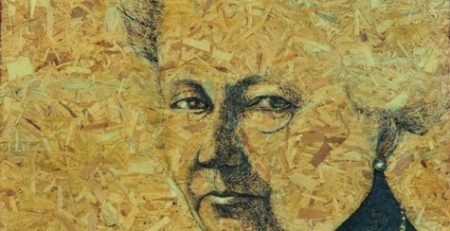
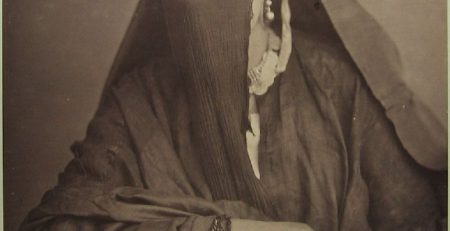
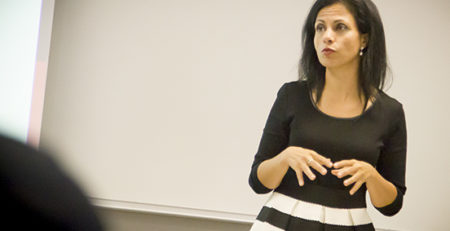

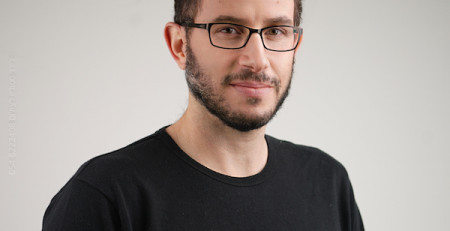

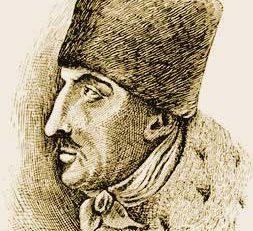

Leave a Reply